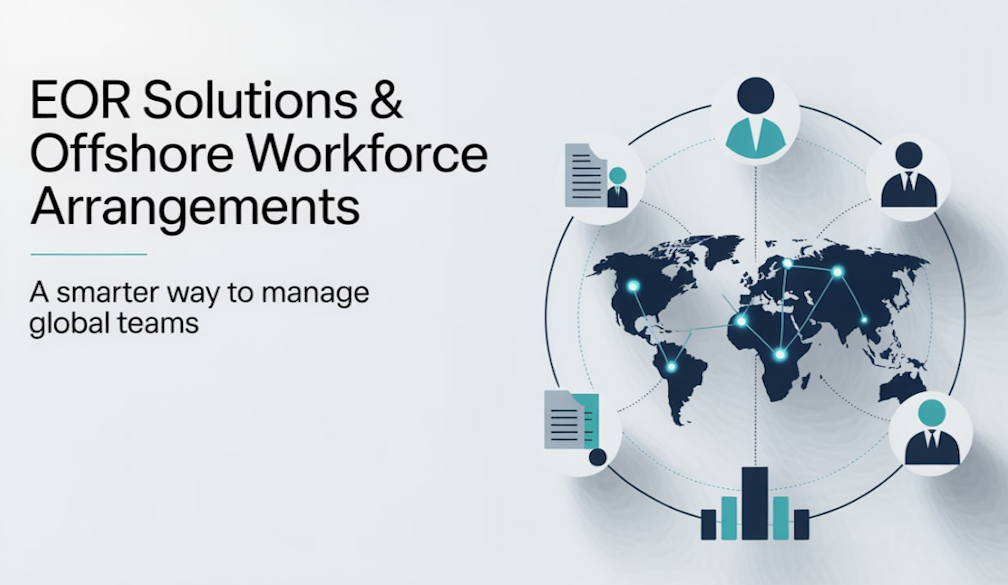Building a Governance Model for Headless Content Management at Scale

Image by pch.vector on Freepik
There's never been a better time to implement a headless content management system (CMS) to gain the flexibility and scalability necessary for developing digital experiences. However, with that flexibility comes complexity from bigger teams to changing content models to content being distributed across multiple channels. But the best approach to combat this complexity is through a governance model. Governance with a headless CMS isn't about hindering growth and innovation; it's about creating systems that encourage uniform production, security, and productivity and scalability that allow team members to create and learn with confidence.
What Governance Means For Headless Architecture
Governance for a headless CMS includes all rules, roles, structures, and systems that establish how content is created, vetted, pushed live, and maintained. With a more traditional CMS, governance happens naturally through templates and forced workflows; with headless, it needs to be undertaken very purposely at the level of data as well as the level of process. Storyblok’s unique CMS solution supports this by combining structured content modeling with visual editing and granular user permissions, making it easier to implement and scale governance frameworks. The ideal construct of a governance model seeks to define who can do what, when, for which pieces of content, under what auspices—and such rules are expected to scale over time as the organization itself grows.
Why Governance Should Be Tied to Personal Structure/Goals
The best way to build a governance model is to ensure that it is tied to personal structure/goals. For example, a startup will need light controls to remain agile whereas a global enterprise will need regionally specific workflows, permissions sets by region and country, and compliance checks. By tying governance to current and projected business goals, those in control will be able to see how many teams will be working on/with content, what languages and demographics will be served, which business units need autonomy, independence, or oversight. The best type of governance model is one that can grow with the business, unimpeded, as operations become more nuanced.
Permissioning by Role Design
The most critical part of any governance model is permissioning by role. Within headless, a user should only be able to view/edit content pertinent to their role data. This avoids accidental changes, protects sensitive data, and allows for accountability where needed. For example, editorial teams should be able to draft and edit; legal should be permitted to suggest edits and approve; developers should have access to content modeling and API configuration. Establishing clear roles with scoped permissions sets the stage for security and collaborative efficiency across many teams.
Centralized Content Models Encourage Consistency and Governance
Content governance is easier with centralized content modeling. If teams don't use the same content models, then content output will be unpredictable, resulting in disintegration of branding requirements or editorial governance policies. A governance model necessitates naming conventions, required fields, field validations, and relationships, as these formulas contribute to data quality. Models will need to be versioned and assessed down the line for revisions that will not derail efforts. A content model that's been governed is like a contract between development and editorial; it states the requirements so that content can be repurposed across channels without fear of being incorrect.
Workflow As A Governed Layer Allows Collaboration At Scale
The more teams that join the fray and the more the scale relies upon increased content volumes, the more access to orchestration via workflow needs to be governed. This element of governance means that there's a repeatable process where workflows are defined according to business logic and checkpoints are dictated by approvals, legal disclaimers, compliance, and best practices. The content governor should have the power to determine different workflows based on content type, when specifics can be automated, or when more manual intervention is needed before publish. For example, a global press release may require a localization review and legal buyoff, whereas an update to a product description may only require editorial review. This type of governance exists to ensure processes are repeatable and transparent at scale.
Quality Assured As A Layer Of Governance Across Channels
Content published requires the governance of quality expectations. Does the content need to be grammatically correct? Compliant to tone of voice? SEO best practices? Accessibility requirements? Legal disclaimers? When working in a headless CMS where content may be reused natively in a thousand different front ends, quality assurance must be part of the governance process. Editorial checklists relative to each step can help with quality assurance, as can content linting tools or scripts that validate aspects automatically before resolution. The library of quality assurance checks can ensure that no matter where any piece of content is published, it is on-brand and legally compliant or at the very least vetted to reduce risk when published.
Control Over Localization and Regional Compliance Efforts
Multinational companies still need to have control over localization and regional compliance efforts. From language and legal disclaimers to sensitivity of content to where it can be published or where it is permitted to run, a governance model from a headless CMS needs to dictate how and when it will be localized, who approves it, and how it is linked to the original. This way, no translation happens without authority, legal limitations will be upheld, and campaign opportunities will remain the same across global markets without suffocating local input.
Organic Document Access for Team Awareness
A governance model is pointless if people are unaware of it. Therefore, all governance policies from permission to access, adherence to standards of content modeling, to acknowledgment of required workflows all must be documented for easy access by all stakeholders. This is an organic document that changes live over time as workflows improve or change and as more content types are learned. The more exposure effective policy documentation has, the less time will be spent onboarding, and clear expectations will allow new teams to effectively assimilate to the content creation world without needing to renegotiate efforts or repeat pieces of content.
Dashboards and Metrics for Visibility of Governance Policies
The only way governance will be sustainable is if it's visible. A headless CMS offers dashboards or third-party integrations that provide assessments of content health, workflow efficiencies, publication frequencies, and governance compliance. Thus, a governance team can identify shortcomings and make changes, keep others accountable, and suggest best practices through increased awareness. For example, if a content type is rolled back often, maybe there's no official review process credited well enough to support it; maybe previously earned credit content is not doing well at present because of new team confusion. If localization happens much less than expected, maybe there's no workflow from the regional level. Therefore, through assessment of this data, governance can not only transpire but also be revised accordingly.
A Dynamic Governance Structure Through Feedback and Audits
Governance is not something set in stone and never altered. As the organization grows, audits of permissions, types and models of content, workflows, and user engagement discover where gaps, redundancies, and risks appear. Furthermore, content creators, developers, and marketers can suggest what is working and not working and which elements of governance are too stringent versus too lax. Thus, a quarterly or project-by-project review of governance will ensure policies are established when no active issue or deviation from best practices exists. This is not disruptive to day-to-day operations but instead strengthens governance without being overly bureaucratic.
The Balance Between Control and Laxness is Key
The ultimate goal for a governance structure is positioned between control and laxity. If it's too governing, content creation halts, people get frustrated, and nothing gets done without oversight. If there's no structure, people go too far on their own with inconsistent messaging, legal vulnerabilities, and technical debt. The point is not to stifle creativity but instead provide a general framework that supports creativity as long as there's accountability for how the final product meets organizational goals and standards.
Content Governance Unique to Enterprises With Multiple Brands or Sites
Organizations with multiple brands or sites under one CMS umbrella have their own governance challenges. Each brand has its own tone and voice, content types, even compliance needs and expectations of branding. The governance model must be scalable but also able to accommodate some of that differentiation while still maintaining a centralized compromise for cohesion and efficiency. Brand-based roles, segregated workspaces, and content-type variations allow these small teams to exist in an expansive world yet still be empowered under larger governance constructs. It reduces redundancies while allowing the governance structure to embrace brand differentiation instead of resisting it.
Centralized Asset Management for Reuse and Control Governance
Within a headless CMS, centralized asset management isn't only about text it includes the media assets used as images, videos, PDFs, and icons. Without centralization, existing assets risk being reproduced and lost, going stale, or not being used properly for whatever reason across additional channels. A governance model should facilitate how digital assets are stored, tagged, and approved for reuse. Centrally accessible digital libraries of assets and version control with permissioning per role allow teams to maintain brand standards while eliminating bloat and ensuring only approved imagery gets integrated into customer-facing channels.
Content Governance for Governed Content Schemas
A must for those looking to enable a headless commerce operation, content governance matters even more concerning aligning product data to appropriately governed content and commerce flows. Reviews, pricing, category pages, and promotional banners exist for a reason within this locale. Content schemas can be built that support business rules allowing for easy change under pressure. With an established governance framework, pricing adjustments, promotional messages, and legally mandated disclaimers can go through standard operating approval flows to minimize errors inside naturally dynamic eCommerce environments while adding a layer of operational agility.
Crisis and Emergency Content Governance
Crisis be it a system failure, a recall, or a regulatory announcement requires rapid governance for extreme content challenges. Even in the future, a governance framework will include defined roles in crisis situations that feature emergency content workflows and override protocols where certain governance leaders can bypass usual approval flows if needed. These initiatives must be documented with guided checks to ensure they're not weasels or chancing going unauthorized. But with the infrastructure of the governance model, enterprises can guarantee that important information goes out without sending content realms into chaos.
Conclusion: Governance as a Scale Path
When it comes to a headless CMS environment, governance is not only the safety net but the pathway to successful scaling. With properly guided content, more can be accomplished without losing order, operational collaboration, brand safety, or sustainability down the road. The longer an enterprise attempts to scale its digital assets, the more a properly sound governance model ensures all content operations remain cohesive, secure, and efficient from multiple teams to channels and markets involved. In an API-first world where independent systems communicate across integrations, governance is not restrictive but the framework that allows for scale.

























